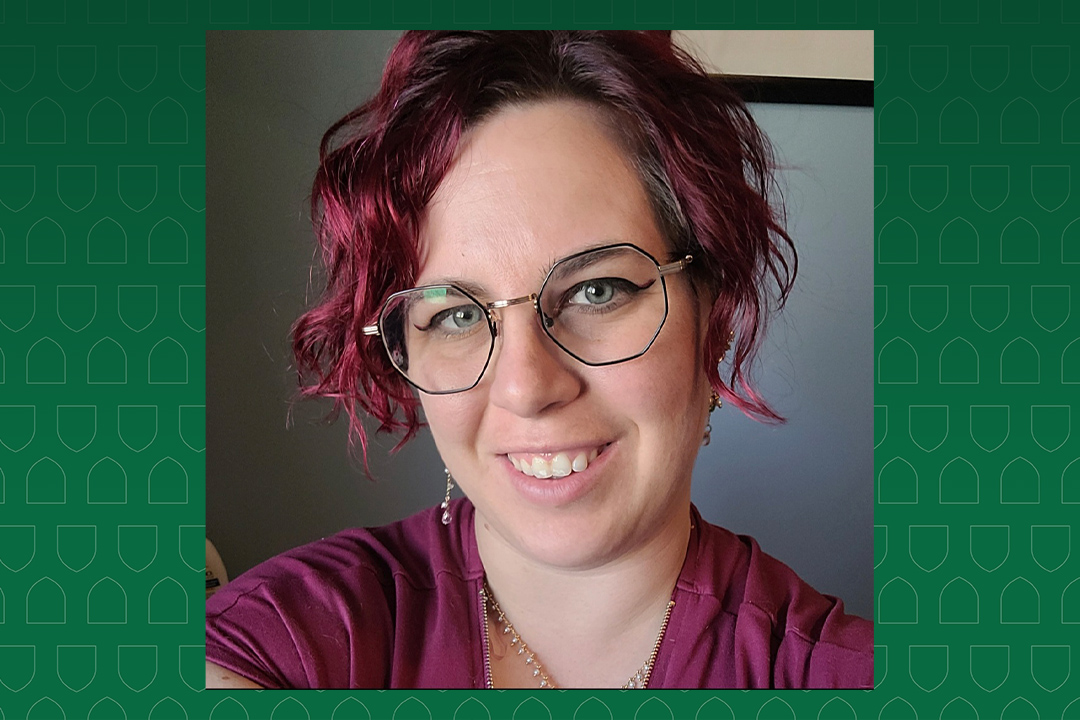
Queerifying math
USask PhD student researching a more inclusive approach to mathematics education
By Connor Jay and Meagan HintherIt’s a common puzzle used when teaching probability theory: the Martin Gardner two-child problem, developed in 1956:
‘Mr. Jones has two children and the eldest is a girl. What are the chances that both children are girls? Mr. Smith has two children. At least one of them is a boy. What is the probability that both children are boys?’
When PhD student Katryne Dubeau was asked the first statement in this problem by her supervisor Dr. Egan Chernoff (PhD), she paused.
“I know what the typical answer is. I know that the traditional answer would be a 50 per cent boy or 50 per cent girl,” Dubeau explained. “But with my experience as a teacher, and as a gay-straight alliance teacher, the answer isn’t a half — it is not that simple anymore. Now we also have non-binary as a gender identity. Therefore, the answer should be a third.”
This moment was the inspiration for the focus of her PhD dissertation research conducted through the College of Education’s Department of Curriculum Studies.
“I delved into the research, specifically what is out there to help our students, and found there’s very little to help our students and educators with this concept and minimal research,” shared Dubeau. “The aim of my research is to address how representation of the 2SLGBTQ+ community, in the math classroom, will increase student achievement in the mathematics curricula, and how the amalgamation of a student’s queer identity and math identity can aid in the retention of students in STEM.”
Dubeau will be applying the framework of Queer Theory as she conducts her research throughout the years ahead.
“Queer theory invites us to rethink what we think is normal and is the act of disrupting the normalization of sexuality and gender,” said Dubeau. “The goal is to create new methods of repurposing mathematics problems, methods of teaching and concentrating on the application of mathematics in a social justice context. We need people to see themselves in math.”
As a previous math and science teacher in Saskatchewan’s Prairie South School Division, Dubeau has had many conversations with students, parents, administrators, and fellow teachers about how to include gender and sexually diverse students in the STEM subjects (science, technology, engineering, and math).
“There are so many great people who are in STEM and who are also a part of the 2SLGBTQ+ community, but these students are not seeing themselves represented,” said Dubeau. “When teaching, I would encourage students to go into STEM, but I have had students come up to me and say, ‘Well, I’m queer. I don’t need to do math, because I don’t need to go into STEM.’”
Dubeau will work with Grades 7-12 high school mathematics educators in Saskatchewan and their students to integrate gender and sexual diversity into the mathematics classroom. While her research proposal is still being refined, she hopes that quantitative data will be collected through pre- and post-classroom surveys for the educators and students to evaluate the effectiveness of including 2SLGBTQ+ culture in the math classroom.
For Dubeau, the enthusiasm and openness expressed by other educators when she describes her research goals has been inspiring.
“When I introduce myself and tell others I’m queerifying math, there’s an enthusiasm, just hearing that someone’s taking interest in that area,” Dubeau said. “Personally, the enthusiasm has been wonderful because it’s showing that people understand the value of queerifying math, and they want to learn to do it as well.”
Together we will support and inspire students to succeed. We invite you to join by supporting current and future students' needs at USask.
Article re-posted on .
View original article.

